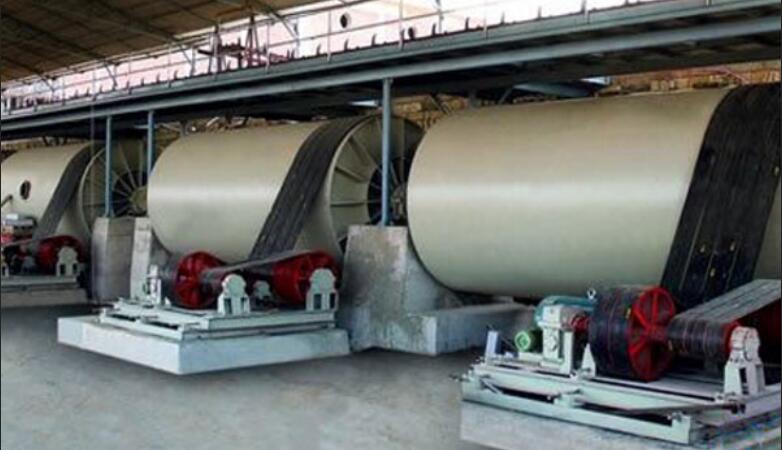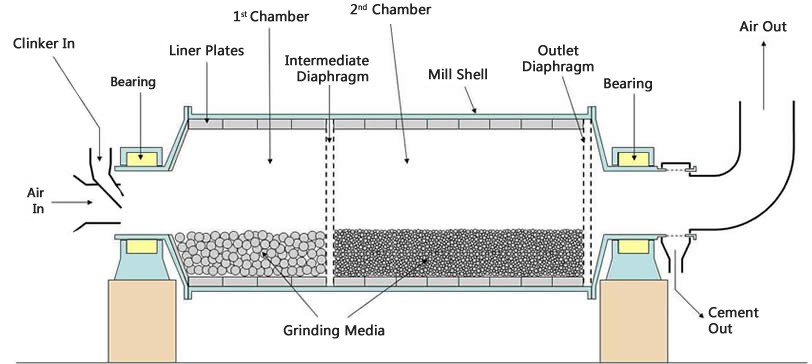Torrive Variable frequency inverters used in Ball Mill
Torrive Variable Frequency inverters used in Ball Mill
1.Introduction for the Ceramic application
In the ceramic industry, the ball mill is an indispensable equipment for material crushing. But the ball mill generally has the high power and low efficiency, so it has become a large power consumption device in the ceramic industry. it is imperative to carry out energy-saving transformation of the ball mill. Because it has significant economic and social significance for the entire industry.

2. The main structure for Ball mill
Ball mill included transmission device, cylinder device, feeding device, discharge device and electrical control device and so on.

3. The working principle
The ball mill consists of main parts such as feeding part, material part, rotating part, transmission part (reducer, small transmission gear, motor, electric control). The ceramic industry has a horizontally placed cylinder divided into 2 to 4 grinding chambers by a partition (a circular plate with small round holes), each having a certain size of grinding body. When the cylinder rotates, the material and the grinding body reach a certain height under the action of the frictional force and the centrifugal force, and then hit the parabolic trajectory under the action of gravity to grind the other bottom portions. The material produces a certain amount of axial motion to promote grinding and mixing of the material. From the process classification, there are two types, dry grinding and wet grinding.
4. Electrical basic control device
Most of the ball mills use frequency-sensitive rheostat as the starting device. (Comparing with the series resistance box, the volume is much smaller, series resistance box method is mainly used for speed adjustable application, and control the speed through the stepping short-circuit resistance). The impact force is large when start-up, and the required torque is reduced after finished the startup operation, so there is great energy-saving space.
5. Transformation program
Combining with the production process requirements and the existing problems, the ball mill system should meet the following requirements after transformation:
(1) The equipment should have sufficient starting torque to meet the ball mill load requirements after the transformation, and to ensure that the equipment can make the motor running smoothly and having constant power characteristics under the variable frequency operation state.
(2) Renovating the original drive system by using the variable frequency speed control system to meet the ball mill normal operation at low speed, then ensure normal process control and extend the lifespan of the ball mill and motor, and also reducing maintenance.
(3) After the transformation, the equipment can achieve automatic control, manual / power frequency, fault switching and other functions, and it also can overcome the rebound voltage caused by the ballast's large inertia, effectively ensuring the normal operation of the equipment.
6. Inverter selection
According to the above principles, our 某个系列 can totally meet with the above request and achieve the desired energy-saving control effect.
7. TORRIVE Variable frequency inverters series application effects
(1) Th starting current become smaller, the impact force becomes smaller, and extending the lifespan for the machine shaft, gearbox gear, belt and other parts.
(2) Achieved the true soft start. There is no impact on the grid, eliminating electrical equipments tripping and failure caused by the ball mill starts, in the same power grid capacity, can increase the number of machine or normal production (There is tripping or damages before the variable frequency inverters added. )
(3) The grinding time, adding grinding time, grinding speed and automatic shutdown function can be arbitrarily set according to the product process requirements, and the operation is more automatic, intelligent and user-friendly.
(4) It will support the ball milling saveing about 10%~15% power consumption.
Return: Back to Previous Level